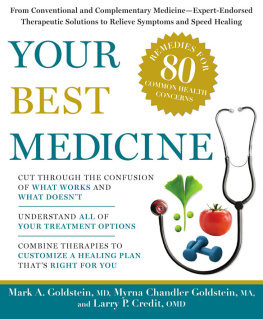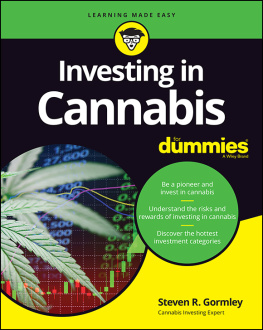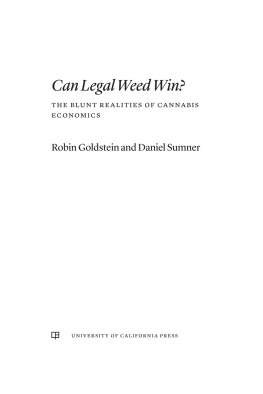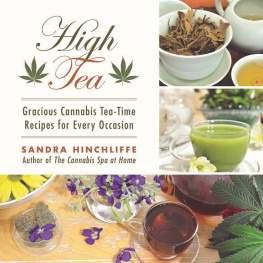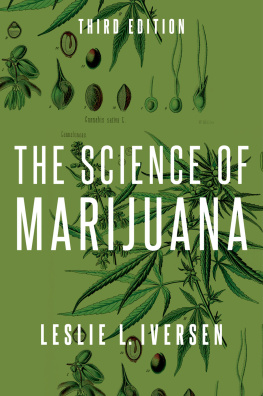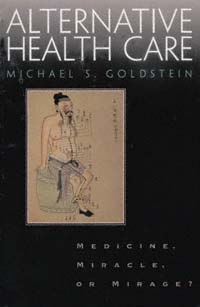Bonni Goldstein - Cannabis Is Medicine
Here you can read online Bonni Goldstein - Cannabis Is Medicine full text of the book (entire story) in english for free. Download pdf and epub, get meaning, cover and reviews about this ebook. year: 2020, publisher: Little, Brown and Company, genre: Romance novel. Description of the work, (preface) as well as reviews are available. Best literature library LitArk.com created for fans of good reading and offers a wide selection of genres:
Romance novel
Science fiction
Adventure
Detective
Science
History
Home and family
Prose
Art
Politics
Computer
Non-fiction
Religion
Business
Children
Humor
Choose a favorite category and find really read worthwhile books. Enjoy immersion in the world of imagination, feel the emotions of the characters or learn something new for yourself, make an fascinating discovery.

- Book:Cannabis Is Medicine
- Author:
- Publisher:Little, Brown and Company
- Genre:
- Year:2020
- Rating:4 / 5
- Favourites:Add to favourites
- Your mark:
- 80
- 1
- 2
- 3
- 4
- 5
Cannabis Is Medicine: summary, description and annotation
We offer to read an annotation, description, summary or preface (depends on what the author of the book "Cannabis Is Medicine" wrote himself). If you haven't found the necessary information about the book — write in the comments, we will try to find it.
Cannabis Is Medicine — read online for free the complete book (whole text) full work
Below is the text of the book, divided by pages. System saving the place of the last page read, allows you to conveniently read the book "Cannabis Is Medicine" online for free, without having to search again every time where you left off. Put a bookmark, and you can go to the page where you finished reading at any time.
Font size:
Interval:
Bookmark:
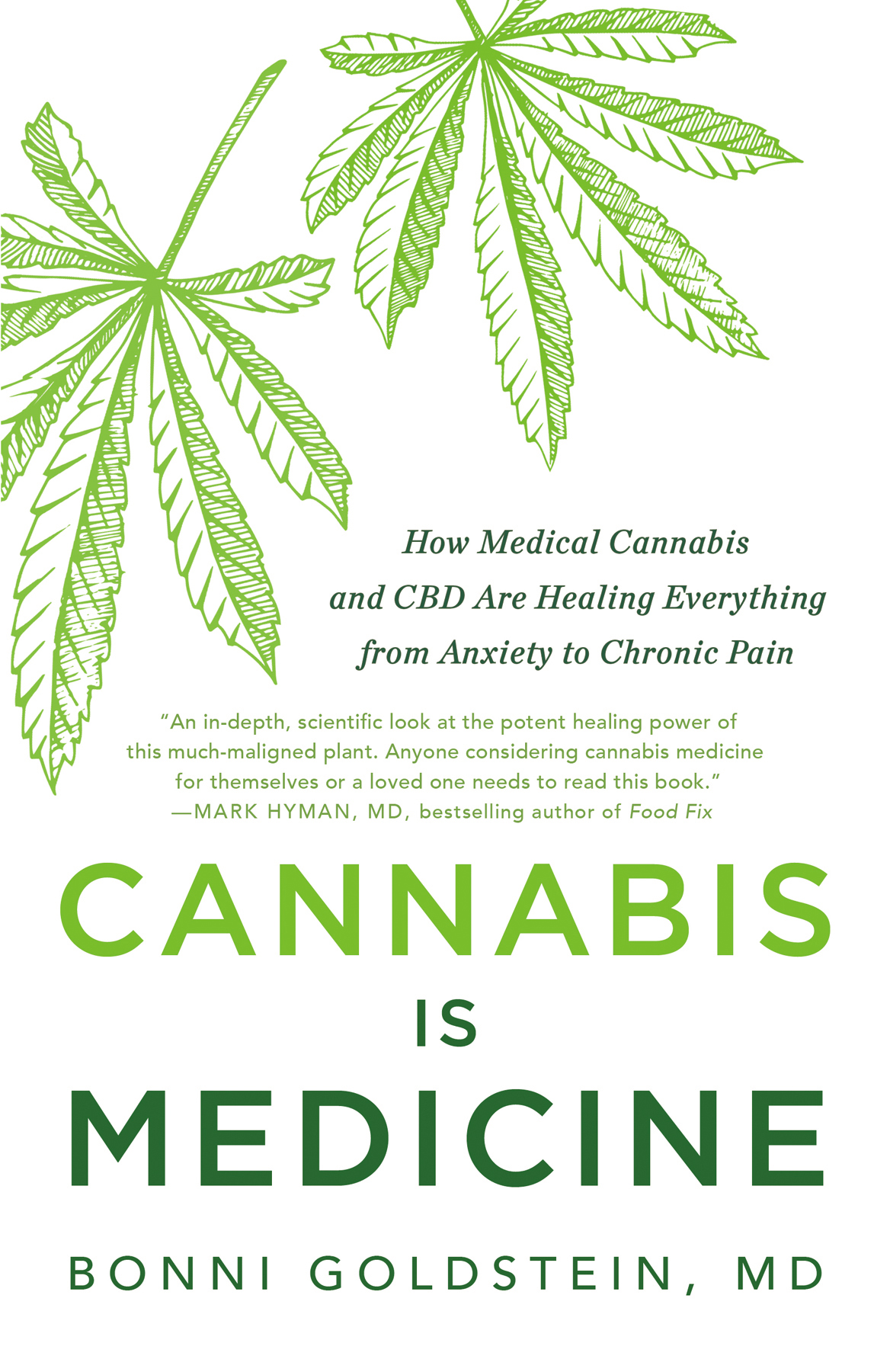
The information contained in this material is intended to provide basic information about medicinal cannabis. It is not intended to, nor does it, constitute medical, scientific, or other advice. No claims, promises, or guarantees about the accuracy, completeness, or adequacy of the information contained in this material are made. Readers are warned not to take any action with regard to medical treatment or otherwise based solely on the information in this material. The information contained in this material is intended to be for your general education and information only and not for use in pursuing or recommending any treatment or course of action. Ultimately, the course of action in treating a given patient must be individualized after a thorough discussion between the healthcare provider and patient.
Copyright 2020 by Bonni S. Goldstein, MD
Cover design by Kirin Diemont
Cover art by Liliya Sudakova / Shutterstock
Cover copyright 2020 by Hachette Book Group, Inc.
Hachette Book Group supports the right to free expression and the value of copyright. The purpose of copyright is to encourage writers and artists to produce the creative works that enrich our culture.
The scanning, uploading, and distribution of this book without permission is a theft of the authors intellectual property. If you would like permission to use material from the book (other than for review purposes), please contact permissions@hbgusa.com. Thank you for your support of the authors rights.
Little, Brown Spark
Hachette Book Group
1290 Avenue of the Americas, New York, NY 10104
littlebrownspark.com
First ebook edition: September 2020
Little, Brown Spark is an imprint of Little, Brown and Company, a division of Hachette Book Group, Inc. The Little, Brown Spark name and logo are trademarks of Hachette Book Group, Inc.
The publisher is not responsible for websites (or their content) that are not owned by the publisher.
The Hachette Speakers Bureau provides a wide range of authors for speaking events. To find out more, go to hachettespeakersbureau.com or call (866) 376-6591.
ISBN 978-0-316-50081-4
E3-20200828-JV-NF-ORI
For my family, who love and support me unconditionally.
And for my patients, who are the true pioneers
in the fight to use cannabis as medicine.
I dont recall exactly when I learned my mother had suffered from seizures. I think I was in high school when she finally talked to me about her medical history, and while there had always been intimations, I felt shocked to hear about it. When I look back on my childhood, I see clues, despite her keeping it a secret from just about everyone.
My mother didnt drive when I was a little girl growing up in Brooklyn. Because there was an abundance of public transportation, it didnt seem that strange, and most of my friends mothers didnt drive either. When we moved to the suburbs in New Jersey, I noticed that my mother was the only one who didnt drive. We never talked about it, and eventually my mother did get her drivers license, but it was many years before I learned the real reason she didnt have one in the early part of my childhood.
At about the same time that I began dreaming about being a doctor, I became aware that my mother took medications every night. Two big prescription bottles sat in the upper cabinet next to the kitchen sink, and whenever I asked about them, she gave a vague answer. I remember getting a sense that this wasnt something she wanted to talk about, so I stopped asking. A few years later, when I was a teenager, I was standing next to her by the kitchen cabinet where the medicine bottles were kept and again asked her about her medications, completely unaware of the story she finally decided to share.
That day she told me that when my sister was two years old and I was just an infant, she had her first grand mal seizure in a Brooklyn playground, followed by two more seizures over the next few days. She eventually went to see a neurologist, and while she was in his office she had another seizure. She was hospitalized and immediately, she, my father, my grandmother, and my uncles were told that she might die. Diagnostic studies of the brain in the early 1960s were quite limited, and the doctors did not know what was causing the seizures. Started on phenytoin (Dilantin) and phenobarbital, she responded positively and was told to continue taking them for the rest of her life.
My grandmother, an uneducated and superstitious immigrant, was in complete denial that my mother had epilepsy. She was terrified and embarrassed at the same time. Because of this, my parents became tight-lipped about what had happened. It just was not discussed or shared with anyone.
I learned much later that even though the medications stopped her seizures, the side effects were difficult to tolerate. She became excessively hirsute and had significant lethargy and fatigue, making the care of two small children particularly challenging. She also had severe gingival hypertrophy, an overgrowth of gum tissue and a common side effect of phenytoin, which led to a lifetime of problems with her gums that still continue. I recall being in middle school and finding out that my mother had to have oral surgery for a terrible problem she was having with her gums. She stayed in bed for days with severe pain after the procedure. I can still see her there with ice on her swollen cheeks, black-and-blue, unable to talk or eat. Little did I know at the time that this was a result of her seizure medication.
After my sisters and I graduated from high school, my mother decided that she just couldnt tolerate the side effects of the medication any longer and that she was finished with it. She didnt consult her doctor or even gradually wean herself off the drugs but rather just stopped taking them. Fortunately, she experienced no repercussions from this arguably risky decision and remains seizure-free today. Meanwhile, I continued to pursue my medical degree and eventually became a doctor, working primarily in pediatric emergency medicine and urgent care. I loved my work, saving lives at the county hospital and teaching medical students and residents, but once I had my son, things changed. I had thought I could manage working nights and being with my son during the days, but after a few years, it grew more and more difficult, as I didnt feel truly present when home with my family. I was a very good pediatric ER doctor, but my frustrations from the exhaustion of night work and trying to be a caring physician in a broken system eventually wore me down.
After I took a leave of absence, a sick friend asked me about medical cannabis, putting it on my radar for the first time. Once I started reading the scientific literature, I grew incredulous that despite the discovery of the endocannabinoid system, the most widespread receptor system in the human brain, and my years of science-based education and medical training, I knew absolutely nothing about cannabis and how it works. Intrigued, I continued to read and study everything I could find about cannabis and soon decided to work part-time in a local medical cannabis clinic. I was surprised to find that the patients I met were just everyday people who went to work, had families, and had medical conditions that were not responding to conventional medications or traditional Western medical interventions. These were people who simply wanted a better quality of life.
I havent looked back since.
Cannabis was not medically available or used as an anticonvulsant during the years my mother took antiseizure medications. In 1970, five years into her epilepsy diagnosis and treatment, the federal government classified cannabis as a Schedule I controlled substance with the passage of the Controlled Substances Act. Defined as a drug or other substance that has a high potential for abuse, has no currently accepted medical use in treatment in the United States, and is lacking accepted safety for use of the drug or other substance under medical supervision, cannabis maintains its Schedule I classification to this day. This has virtually shut down all research on the multitude of compounds in cannabis that we now know have low risk for abuse, true and proven medical use, and an excellent safety profile, especially with medical supervision. Scientists had started significant cannabis research in the 1960s and were gaining knowledge of the phytocannabinoids, but this act by Congress completely closed the door on advancing cannabinoid science. After the discovery of the endocannabinoid system in the late 1980s, investigations in the field have exploded, especially in the last decade and mostly outside the US.
Font size:
Interval:
Bookmark:
Similar books «Cannabis Is Medicine»
Look at similar books to Cannabis Is Medicine. We have selected literature similar in name and meaning in the hope of providing readers with more options to find new, interesting, not yet read works.
Discussion, reviews of the book Cannabis Is Medicine and just readers' own opinions. Leave your comments, write what you think about the work, its meaning or the main characters. Specify what exactly you liked and what you didn't like, and why you think so.

